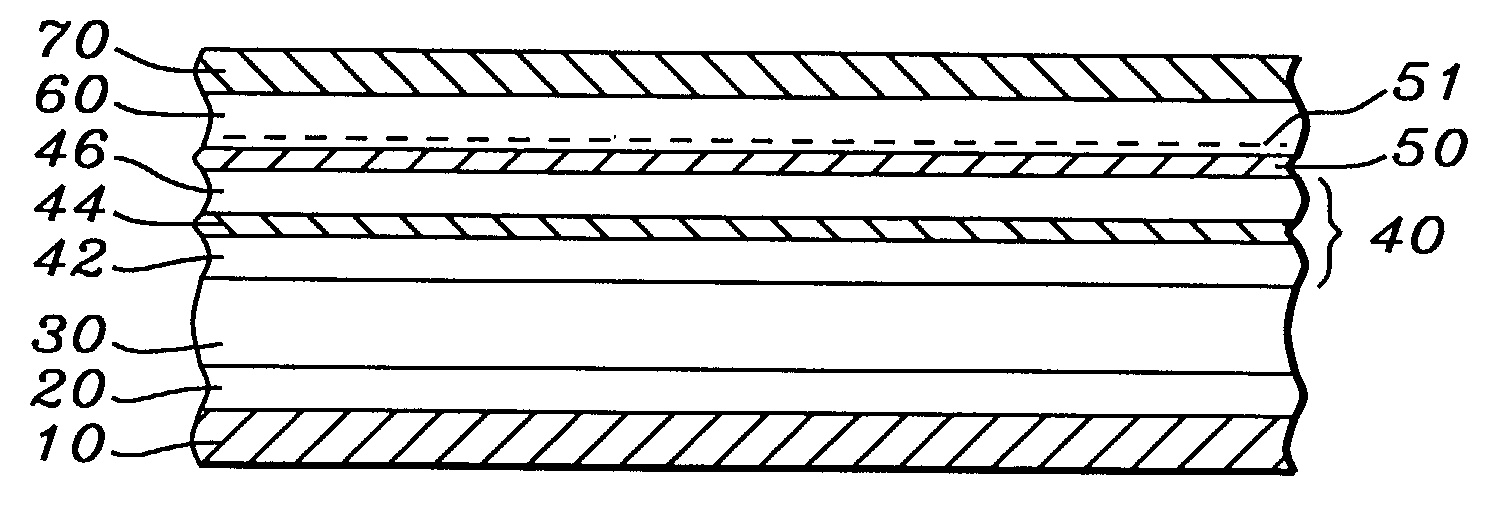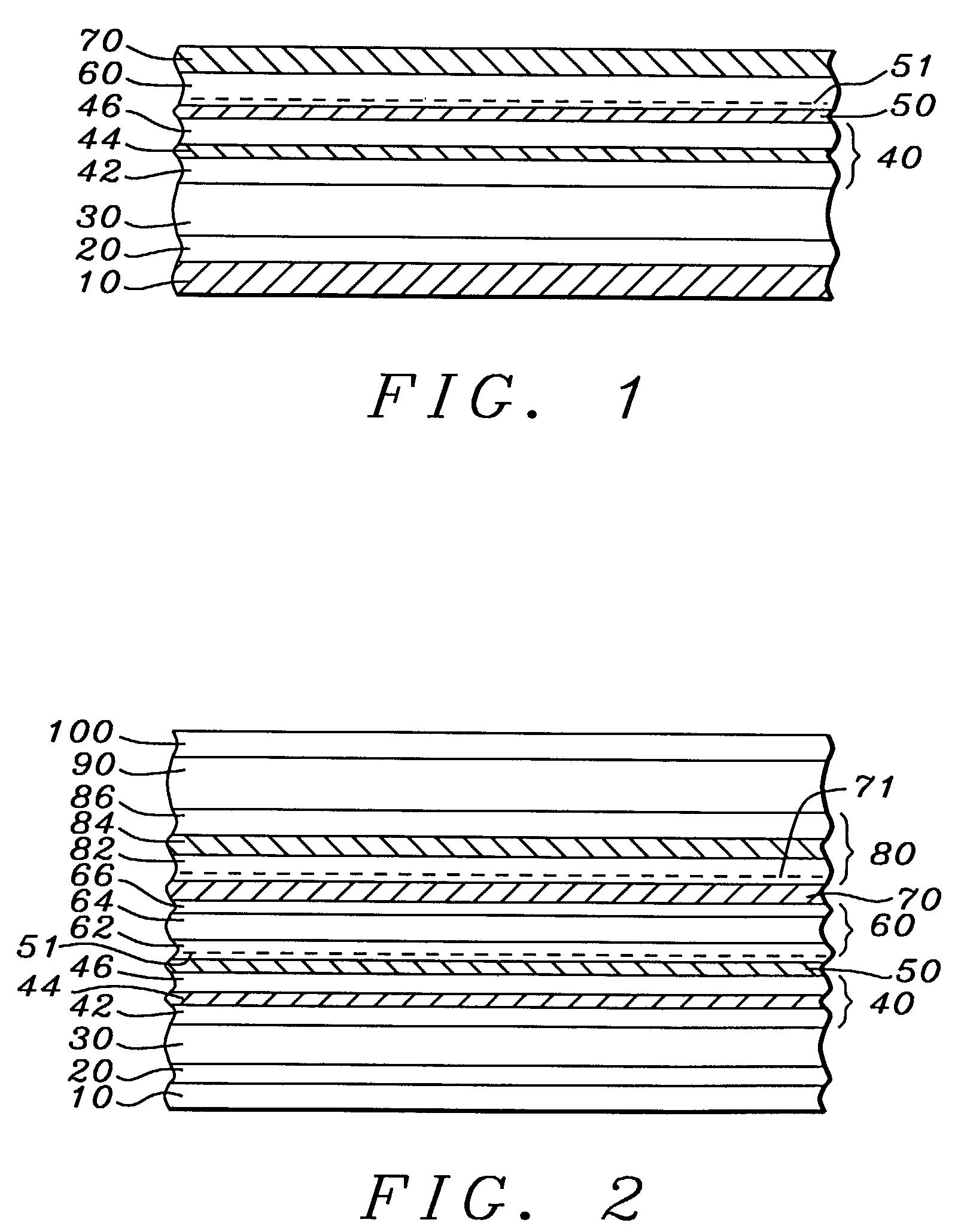Method of fabricating novel seed layers for fabricating spin valve heads
a technology of giant magnetoresistive magnets and seed layers, which is applied in the field of fabrication of giant magnetoresistive (gmr) magnetic read heads, can solve the problems of insufficient performance and difficult accuracy of the sensing process, and achieve the effect of improving the output of the sensor and reducing the thickness of the seed layer
- Summary
- Abstract
- Description
- Claims
- Application Information
AI Technical Summary
Benefits of technology
Problems solved by technology
Method used
Image
Examples
Embodiment Construction
[0021]The present invention provides, in a first embodiment, a method for forming a GMR bottom spin valve sensor element utilizing a novel ultra-thin seed layer, that allows the resulting sensor to read recorded densities exceeding 60 Gb / in2. In a second embodiment, the invention provides a method for forming a GMR symmetric dual spin valve sensor element utilizing the same novel, ultra-thin seed layer. The sensor elements so formed are extremely thin and have a high sensitivity and signal-to-noise ratio.
Experimental
[0022]The sensor configurations for both the single bottom spin valve and the dual symmetric spin valve were obtained after lengthy experimentation, during which the performance of many configurations were investigated and compared to the performance of reference configurations that were typical of the prior art. The results of the experiments yielded two broad conclusions: 1) the prior art NiCr seed layer with 40 atomic percent of Cr could advantageously be replaced by ...
PUM
| Property | Measurement | Unit |
|---|---|---|
| thickness | aaaaa | aaaaa |
| thickness | aaaaa | aaaaa |
| thickness | aaaaa | aaaaa |
Abstract
Description
Claims
Application Information
 Login to View More
Login to View More - R&D
- Intellectual Property
- Life Sciences
- Materials
- Tech Scout
- Unparalleled Data Quality
- Higher Quality Content
- 60% Fewer Hallucinations
Browse by: Latest US Patents, China's latest patents, Technical Efficacy Thesaurus, Application Domain, Technology Topic, Popular Technical Reports.
© 2025 PatSnap. All rights reserved.Legal|Privacy policy|Modern Slavery Act Transparency Statement|Sitemap|About US| Contact US: help@patsnap.com


